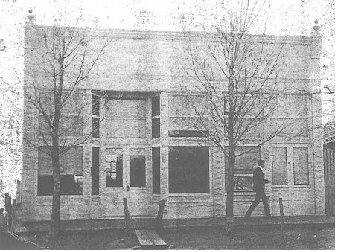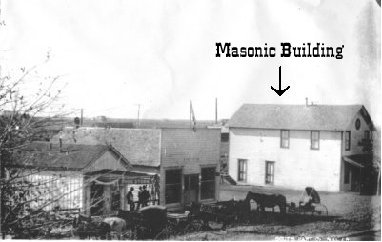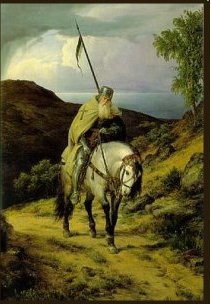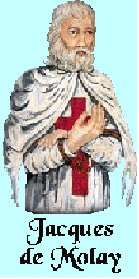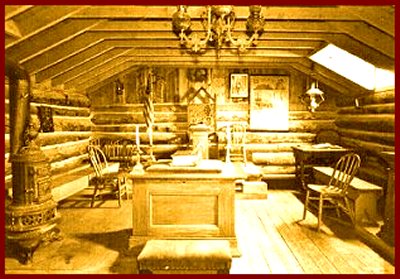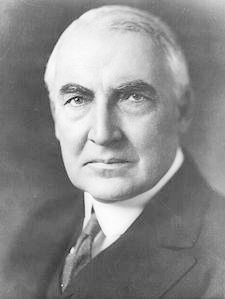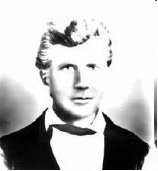

Waller Masonic Lodge #808 AF & AM
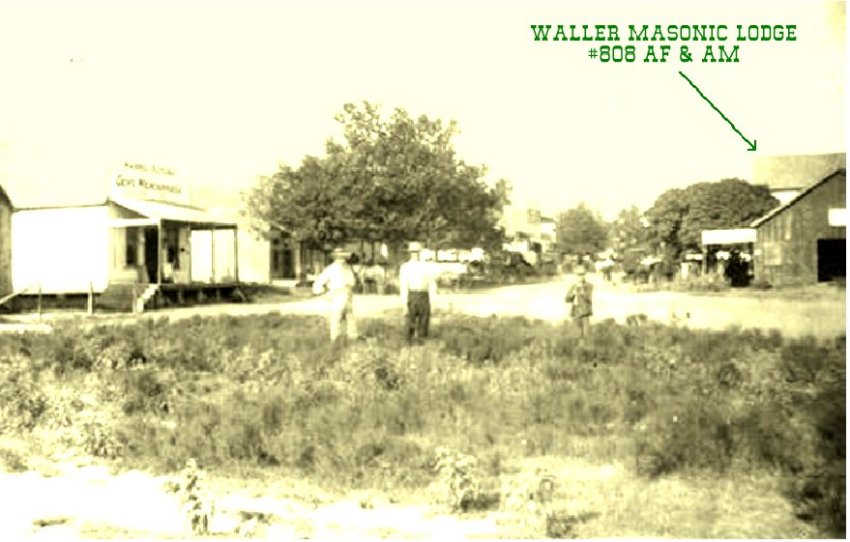 Waller, Texas Circa 1900 |
|
Page IV | |||||||||||||||
|
A Small Town Texas Lodge
On December 30, 1897 a stated meeting was opened at 2:00 PM by District Deputy Grand Master A.F. Brigance for the purpose of organizing Waller Masonic Lodge # 808 AF & AM.
The charter members present were,
Brother J.W. Gallion was appointed temporary secretary. Brother A.K. McKilvey was appointed Senior Warden and Brother J.W. Milam was appointed Junior Warden and Brother J.J. Page as Tiler. Brothers J.P. Byrnes, J.E. Mills, D.A. Cabeen names were presented in the Petition for the Charter for the three principle offices were called to the east and were respectively installed as Worshipful Master, Senior Warden and Junior Warden. With a few well chosen words District Deputy Grand Master A.F. Brigance Waller Lodge #808 duly organized An election was cast and the following were elected, George P. Zeiss as Treasurer, J.W. Gallion as Secretary, J.W. Phillips as Tiler, The appointed officers were J.G. Dupree Senior Deacon and J.R. Dupree. Brother E.T. Adams was elected as Chaplain. G.A. Race and A.E. Claude were appointed as stewards J.P. Byrnes, J.E. Mills, D.A. Cabin and J.W. Gallion were appointed as a committee to find a room where the Lodge could hold meetings. Renting the hall over the German-American Bank as the first home of Waller Masonic Lodge was authorized at the second meeting of the new Lodge.
But, in 1910 Rochen's blacksmith shop next door caught fire and the fire spread to the Mason building and it along with Dr. Danial's Drug Store on the ground floor were destroyed. Everything inside the Lodge building was lost. The story goes that sometime after the fire, Worshipful Master C.A. Umland came in to open the bank one morning and found a pile of Lodge furniture, including the Masters and Wardens chairs,stands and benches, stacked on the sidewalk in front of his bank.
|
|
Page V | |
Continued From Page 4 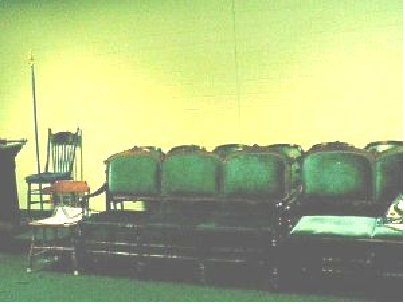 The Junior Warden’s Station With Some Of The Old Furniture There was a note attached to the furniture saying that Holland Lodge #1 had just replaced the furniture in their Lodge and they thought Waller Lodge could use the old ones. So, the beautiful old handmade furniture you sit on at Waller Lodge, may be where Sam Houston, Anson Jones and many other Texas Heroes sat before you.  The Current Lodge Building at Main and Locust | |
|
Waller Lodge held a new type of fund raiser this past August, a “NO CHICKEN” bar-b-que chicken fund raiser.
What is a no chicken sale, you may ask? During the August stated meeting, one of the Brothers made the suggestion that we should hold a fundraiser to raise cash for a small local project. Of course being small town Texans what could be more Masonic then a bar-b-que chicken sale. After some discussion, it was decided that the price of chickens has increased so much since the last sale, our profits would pretty small. It was also brought up that many of the Brothers are getting older and the August temperature here would be in the 100’s. One of the Brothers stood up and said he would rather just donate $20.00 to the project then try to bar-b-que and sell the hot chicken halves in our summer heat. Almost every one of the members present agreed that it was an excellent idea for a summer fund raiser and the "No-Chicken Sale" was born. It was decided to extend the program through the September stated meeting, so that every member not there for the August meeting could have a chance to participate in helping our Lodge. A notice about the, "No Chicken Sale", was also included in the September newsletter. We probably took in about as much as the profit we would have made in a past bar-b-sale sale without an upfront financial outlay and it all took place in the air conditioned Lodge Room. This type sale may not work so well for our northern Brothers in the summer time, but I’ll bet it would work very well in January. |
|
Page VI | |
Author Unknown
It was just three weeks ago that I became a member of the Deep Hollow Lodge, No. 111. That night, I was so mixed up about what happened, that I decided to go to the meeting tonight to see just how things are done there. I got through with the milking early, fed the hens, saw that the pigs were penned up, went to shave, and once again, put on my blue suit that Uncle Josh gave me for Confirmation. I cranked up old Henry and started out on the twenty-nine mile trip to the Lodge.
Then along comes a feller with a long stick in his hand. He shook hands with everybody, and then they would stand up and blow in his ear. When he got to me, I shook his hand and blew in his ear too, but he didn’t like it much. He called me Confusion. Then the feller, I think they call him Master, asked if anyone knew me, and they did, so that was all right. After that, an old man got up and said some nice prayers, and we all sang a song, which was pretty good. While we were still standing, everybody started moving their hands in different ways, so I did the same. Then along comes a feller, guess he belongs to the church, cause I heard him called ‘Deacon’. He lit some candles; can’t figure out why, cause it was plenty light in the room. Then the Master told someone to tell the feller outside that the lodge was open, but he didn’t seem to care, cause he didn’t come in anyway. Then the boss called the feller at the desk the Secretary and told him to do some reading. This was the first time I saw a real Secretary. I once read a story in a magazine where a married man ran away with his Secretary; couldn’t imagine who would run away with the old man and what for. The Master got up and said the Lodge was open and that he was looking for business. Don’t think anybody gave him any, though a few of the men did some talking about sickness and other things. After a while, the Master told the son of the father that we was to have some refreshments; then the junior one hit his hammer and we stood up, and he told us also about getting some refreshments. I waited around a bit to see what we would get to eat and drink, but seems they plumb forgot about it all, cause I didn’t see anybody get anything, so I got my hat and coat and went home. Guess I won’t go anymore, cause everybody’s all mixed up, just like myself. This little story was presented in a humorous vein. Yet, it points out that very often the candidate is not sufficiently instructed and assisted in grasping the basics of Masonry. This omission on our part may prevent him from really enjoying the lessons that are being taught and the fellowship that is his right as a brother Mason. | |
|
To the Masonic student reviewing changes which have taken place in forms and ceremonies during the past 200 years, the old tracing boards and charts furnish much that will repay scrutiny. The emblems of fidelity, and the sword pointing to a naked heart, are missing from the old tracing boards of the eighteenth century, and the number of steps ofthe winding stairs is seven in most cases. In some of the old tracing boards we find three windows as the three lights of a Lodge, and the "broached thurnel" as a substitute for the perfect ashlar. In the latter half of the 18th century the "ancients" displayed the operative tools on the floor of the Lodge; while the "moderns" used a drawing to illustrate them. The suspended key of the old tracing boards has no significance to the Mason unfamiliar with the ritual of the 18th century.
|
|
Page VII | |||
By Corky
The following are some of the pieces of evidence that all Masons should consider.
Immediately after the first arrests the King's agents visited the Templar treasury. The great treasure (which was the objective of outlawing and arresting the Templars) had vanished without trace, as had almost the entire Templar fleet French Masonic ritual indicates that Scotland was designated as the place of refuge or safe keeping for the Templar treasures. In 1312, after the Council of Vienne, and under extreme pressure from King Philip IV, Pope Clement V issued an edict officially dissolving and outlawing the Knights Templar Order. Under threat of excommunication, it ordered every country’s ruler to seize Templar property for the Catholic Church and execute the Templars. Most kings and nobles who had been supporting the Knights up until that time, finally gave up and dissolved the orders. Most, however, they were not so brutal as the French. In England many Knights were arrested and tried, but not found guilty. Templars did find a relative safe haven in Scotland, since Robert the Bruce, the King of Scots, had already been excommunicated for other reasons, and was therefore not disposed to pay heed to Papal commands.
The layout of Rosslyn Chapel near Edinburgh Scotland, which was started in 1440, is an exact replica of the ground plan of the Third Temple, built in Jerusalem by Herod and destroyed in the First Century by the Romans. A statue in the Rosslyn Chapel that was carved at the time the Chapel was being built shows a man kneeling between two pillars. He is blindfolded and has a running noose about his neck. His feet are in a strange and unnatural posture and in his left hand he holds a bible. The end of the rope about his neck is held by another man who is wearing the mantle of a Knight Templar. This was two hundred and seventy years before the claimed founding of the Craft in England.
Rosslyn Chapel was built by Sir William St Clair Last St Clair Earl of Orkney. He was a direct descent of William de St Clair, the Last Templar Grand Master of Scotland to house artifacts brought by the Knights Templar to Scotland in 1126. Between 1118 and 1128 the Templars excavated the ruins of Herod’s Temple in Jerusalem. This was proven in 1860 when the British Army Engineers mounted an expedition to Jerusalem. They excavated beneath Temple Mount and found many deep tunnels in which they also found and recorded Templar artifacts. Degrees in the Ancient and Accepted Scottish Rite such as the Knight of Saint Andrew, the Knight of Rose-Croix, and the 32nd Degree in Consistory make reference to a "Masonic Knights Templar" connection. A few more thoughts; Why did the Templars completely disappear during the 1100’s when they were in no danger danger in Scotland?
|
|
Page VIII |
Continued From Page 7 Why did Masonic Lodges develop in Scotland and England and spread to the aristocracy in Europe. There were many times more Cathedrals being built in France, Spain, Portugal, and Germany and many times more stone masons in Europe? You can understand how the Knights Templar may have required blood oaths from all members to prevent revealing any information about the order, since they were outlawed throughout the world by the Catholic Church, except in Scotland. But, why would stone masons need them to protect the secrets of building a church? Why is the Masonic youth organization for young men, the Order of DeMolay, be named after the last Grand Master of the Templar order, Templar Jacques de Molay who was executed? Why is the Masonic Knights Templar, one of the largest philanthropic organizations in the United States, and the largest Templar order in the world? The Order's efforts include the "Knights Templar Eye Foundation", and the "Knights Templar Holy Land Pilgrimage". Why is the Knights Templar the final order joined in the York Rite Masons. (Unlike other Masonic bodies which only require a belief in a Supreme Being regardless of religion, membership in Knights Templar is open only to Master Masons who promise to defend the Christian faith, as did the original Knights Templar founded in the 12th Century .) Actually, some historians have make the connection between the Knights Templar and Masonry, such as John Robinson in Born in Blood and Dr. Robert Lomas in The Origins of Freemasonry |
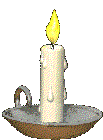 Freemasonry Freemasonry 
What Is It?
Freemasonry means many things to many people. This is true not only of the person who is a Mason, but applies to non-masons as well. Some of those who have been members of the Masonic Craft for many years are afraid to mention even the things which almost everyone knows about the fraternity. Others among us are convinced that Freemasonry is a secret society and that they, as members, are forbidden to talk about it to others whom they do not know to be Masons. Most of this is far from the truth, so a word of explanation concerning this Fraternal Organization would not be amiss.
Freemasonry's Organization The Officers of the individual Lodge are the Worshipful Master (the term worshipful being used in the Old English manner, meaning respected), and the Senior and Junior Wardens. The term warden means "watcher" or "supervisor", taken from the Old English term used by the stonemasons of the eighteenth century. In addition, the Lodge has a Treasurer and Secretary as well as two Deacons. Both of the latter are messengers who carry messages at the direction of the Master or the Senior Warden, to others about the Lodge, as the occasion requires. These two brethren also see to the accommodation of visitors when the Lodge is assembled. There are also Stewards, who oversee to the preparation and serving of food, along with other duties. There is a Chaplain, charged with offering prayers and reading the Bible at specific times. The officer outside the door is the Tiler or Tyler, who guards the Lodge from intrusion.
What Is It? Yes, it is all of these, but is more; Freemasonry is a philosophy to live by, the shadow of a mighty rock in a weary land. |
|
Page IX |
|
Corky
Hey, we missed you at the Lodge meeting Brother Bell.
Wouldn't those ol' country boys have really had a treat,
Their Lodge is in the schoolhouse. A two story building,
I was told about the meeting and said I'd like to attend.
They made an event of the examination and it was tough.
They enjoyed themselves a lot for three hours or more.
Next day, the farmers commenced coming in at daylight.
Whittling on sticks and talking 'Masonry on the square.
Whole hams, whole turkeys with the stuffing sticking out.
To keep from falling down with the load that they held.
Enough to say that we ate and talked until four o'clock.
The women cleared up the place and we men went out.
The Senior Warden had his hound sitting by his chair,
I thought the work was over, but then I saw t'wasn't all.
There isn't a man in this room, that hasn't watched you,
Your father belonged to this lodge and sat in every chair.
Jim, while we don't know much about heaven, our souls
Watch your career as a man and Mason. Be confident,
In your future, Jim, try to remember he's looking down
The lodge where your father was Master and loved it so.
has started in tonight and partly for your daddy's sake,
Jim was in tears and I will admit that I was sniffing too |
|
Page X | ||||
By: James A. Marples, VII°
The official website of The White House describes President Harding as a "leader in fraternal organizations". Harding was a "joiner" of most of the Lodges and fraternal orders of the day. Specifically, he was initiated an Entered Apprentice on June 28, 1901 ...then, a rival newspaperman in Marion Ohio blocked Harding's advancement to the Fellow Craft Degree until the year he was elected President of the United States. (Harding was Raised to the Sublime Degree of a Master Mason on August 27, 1920. In 1921, he became a Knight Templar in Marion Commandery No.36, a 32nd degree in the Ancient & Accepted Scottish Rite of Columbus, Ohio. Harding became the first U.S. President to become a member of The Shrine (Aladdin Shrine in Columbus, 1921; Honorary Member of Almas Shrine in Washington DC in 1921; Honorary Member of the Imperial Council AAONMS in June 1923). Kallipolis Grotto in Washington DC made him a "Prophet at Sight" at the White House, May 11, 1921. Warren Harding was also a member of Washington Chapter No.3 of National Sojourners. He was scheduled to receive the degrees of Cryptic Masonry in Marion Council No 22 R&SM, but died before the conferral. This was also the case of Harding being elected to receive the 33° of The Supreme Council of the Scottish Rite of the Northern Jurisdiction of the USA, but died before he could attend its conferral. In addition, Harding was also a member of the Elks Lodge # 32 of Marion, OH, and the Knights of Pythias Lodge.
At a cornerstone laying in Birmingham, Alabama, Harding said, "I have been a better citizen for being a Mason. There Iis nothing in Masonry that a free, religious, and just American could not be proud to subscribe to, and be a better citizen for so doing."
President John F. Kennedy on his 21st birthday joined the Elks Lodge and was a member of Boston, MA #10 at the time of his death November 22, 1963. Since both Harding and Kennedy were "Lodge men" in the Elks Lodge....both had experienced a "can do" spirit. And, I feel that the common link in both of their appeals is the patriotic spirit of selflessness instead of selfishness. Both men would urge us today ask ourselves how we can help our neighbor...Ask how we can help our communities...and how we can help the world at-large.
In July, 1923, President Warren G. Harding officiated at the Laying of the cornerstone of the Masonic Hall in Ketchikan, Alaska. On August 2, 1923 he was scheduled to give an address to Hollywood Commandery No.56, K.T., Hollywood, Calif., on the occasion of his home Commandery delivering to them the International Traveling Beauceant, the night of August 2, 1923.
His delegation made it back to San Francisco, California, but Harding was unable to give the speech (which was delivered by Harding's secretary Sir Knight George B. Christian at the Knights Templar gathering). At approximately the same hour as that event, 7:30 pm, August 2, 1923, Harding died from a stroke.
When John F. Kennedy delivered his "Ask not..." speech in 1961, it was some 45 years after Harding had delivered his own slightly different version in 1916. I find it striking that I am writing this Article in 2006, which is precisely another interval of exactly 45 years.
As Freemasons, we are accustomed to re-working a rough ashlar to make it a more perfect ashlar, fit for the builder's use. As Rosicrucians, we are accustomed to the ongoing refinement of certain materials and substances to increase their worth or value. President Harding's rough original draft was the "seed" which grew and was later polished, revised, and refined to form the final draft of President Kennedy's speech.
If I were to paraphrase both men, I think I'd say something to the effect, "Let us, as citizens, reduce our rhetoric of complaining about what is wrong with the country, and set out to increase what we can do (and WILL do) to help our neighbors."
Let us honor the memory of Presidents Harding and Kennedy. It is significant that the "Ask not" speech tells us to focus on those things we can do. By helping our neighbors, we are helping ourselves. |
|
Page XI | ||
Who was the real Augustus McCrae?
While McMurtry states that McCrae and Call were not modeled after historical characters, there are quite a few similarities between them and real-life Texas cattlemen Oliver Loving and Charles Goodnight. For example, Goodnight was a Texas Ranger, and there are several close parallels between the fictional partners of McCrae and Call, and the real-life partners of Loving and Goodnight. But the most striking similarity is the death and burial of the fictional Gus, and the actual last days of Oliver Loving. Both died on a cattle drive from gangrene brought on by a wound inflicted by an Indian. Before they died, both requested of their best friend to be buried in Texas, and both Goodnight and Call made good on a difficult promise to return their bodies to their home, Texas.
By 1857, Loving owned 1,000 acres of land and was raising cattle. The need for cattle was elsewhere, so to market his large herd, Loving drove them out of Texas. In that same year he entrusted his nineteen-year-old son, William, to drive his and his neighbors' cattle to Illinois up the Shawnee Trail. The drives made a profit of $36 per head and encouraged Loving to repeat the trek the next year.
In 1866 Loving heard about the need for cattle at Fort Sumner, New Mexico, Loving gathered a herd of cattle and combined it with that of Charles Goodnight. Together they began a long drive to the fort. Their route later became known as the Goodnight-Loving Trail, and the project proved very profitable to them.
In the spring of 1867, Loving and Goodnight started a new cattle drive, again to Ft. Sumner. This drive was “snake bit” from the start; it was slowed by days of heavy rains, and threats from Indians all along the way kept the cattlemen on constant guard. Several days out of Ft. Sumner, Loving went ahead of the herd, taking with him Bill Wilson, a trusted scout. Although he told Goodnight that he would travel only at night through Indian country, Loving became impatient and pushed ahead during the day. His actions brought a Comanche attack, and during the first few minutes of the attack, Loving was seriously wounded.
Loving and Wilson took refuge under a small dirt embankment, and killed several Indians who tried to charge their location. Understanding that their best chance for survival was for one of them to get help, Loving sent Wilson back to the herd for the others. Loving spent the next several days fighting off Indian attacks with a repeating rifle and five pistols. Hungry, almost out of ammo, and facing exhaustion from loss of blood,
Loving decided to come out and take his chances. He found that the Indians had moved on, either giving up on him, or thinking he was dead. He started walking, and was found by a Mexican family and taken to Fort Sumner. The doctor at Ft. Sumner was inexperienced, and although the wound to Loving's arm was infected, he chose not to amputate until it was too late. Gangrene set in and Loving was dying. |
|
Page XII | |
|
Continued From Page 11
Goodnight learned of Loving's plight and hurried to Ft. Sumner. Before Loving died, Goodnight assured him that his wish to be buried in Texas would be carried out. Oliver Loving was buried at Fort Sumner while Goodnight drove the herd on to Colorado, and upon Goodnight's returned, Loving's body was exhumed and carried back to Texas. Stories differ as to who accompanied the body back to Weatherford, but likely it was escorted by both Goodnight and Loving's son, Joseph.
An article on Charles Goodnight, by Bro. Dexter Sammons, published in the Transactions of the Texas Lodge of Research, states: “Even though Goodnight and Loving were partners and brother Masons, there is no record that hey ever had the opportunity to attend lodge together.” Oliver Loving was honest, very well liked, and considered by all to be the “Dean of the cattle drive in Texas”. He was inducted into the National Cowboy Hall of Fame in Oklahoma City, Oklahoma. Loving County, Texas and Loving, New Mexico, are named in his honor. There are simply too many parallels in the lives of Oliver Loving and Charles Goodnight, and the fictional lives of Gus and Woodrow, to write it off as coincidence. If the character of Gus wasn't based on the life of Loving, and the character of Woodrow wasn't based on Goodnight, then those pigs can fly. Compiled from The Handbook of Texas Online, Wikipedia, and with assistance from the Grand Lodge of Texas Library and Museum, Waco Texas. Written by Dick Brown, Chairman, Grand Lodge of Texas History Committee and Lonesome Dove fan. | |
Jacksonville, FL, July 02, 2008
Background screening is such an important tool that sometimes gets overlooked but in todays society it is a must. For less than $20 an organization can protect not only themselves but the community. |
|
|

